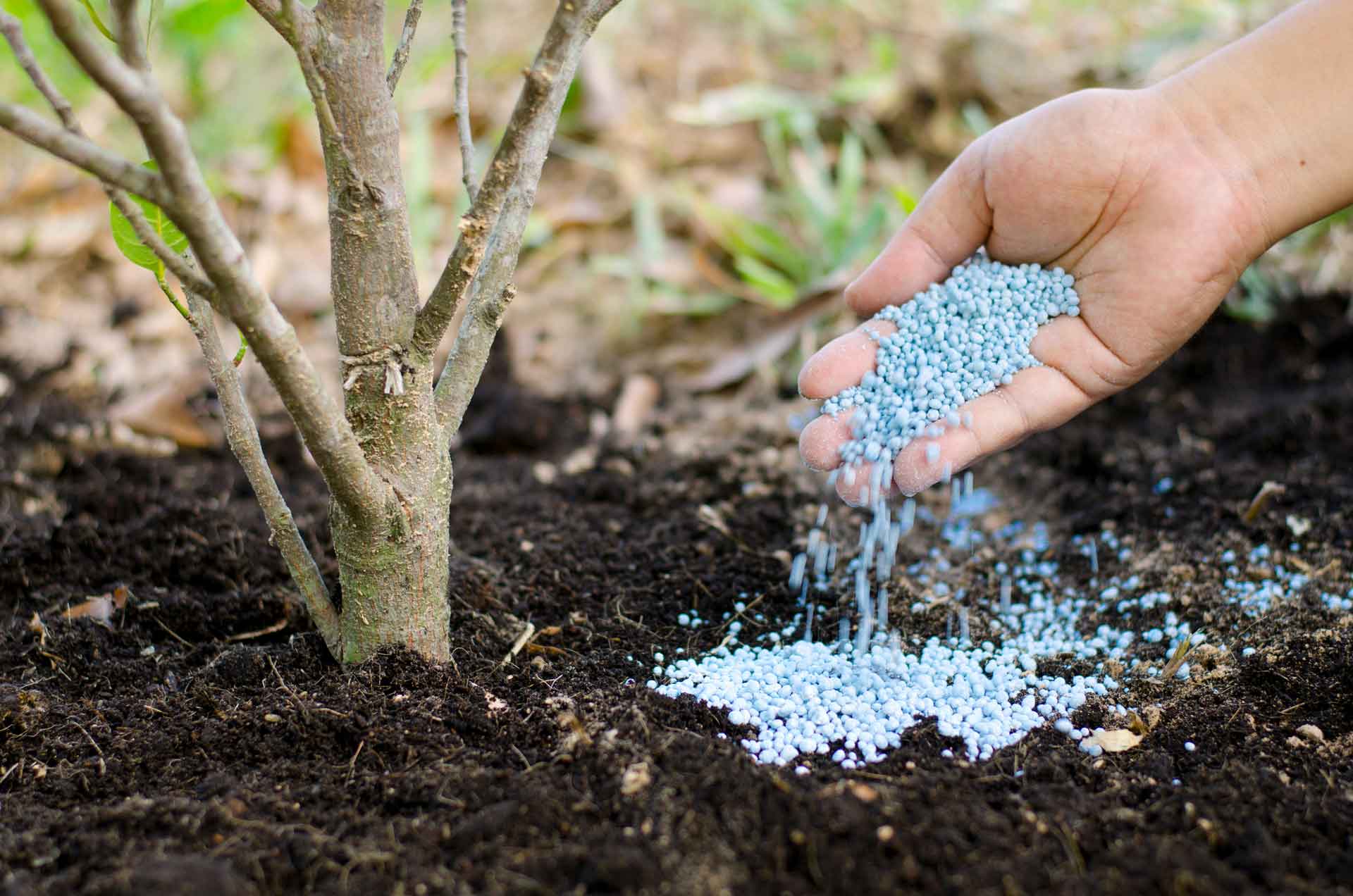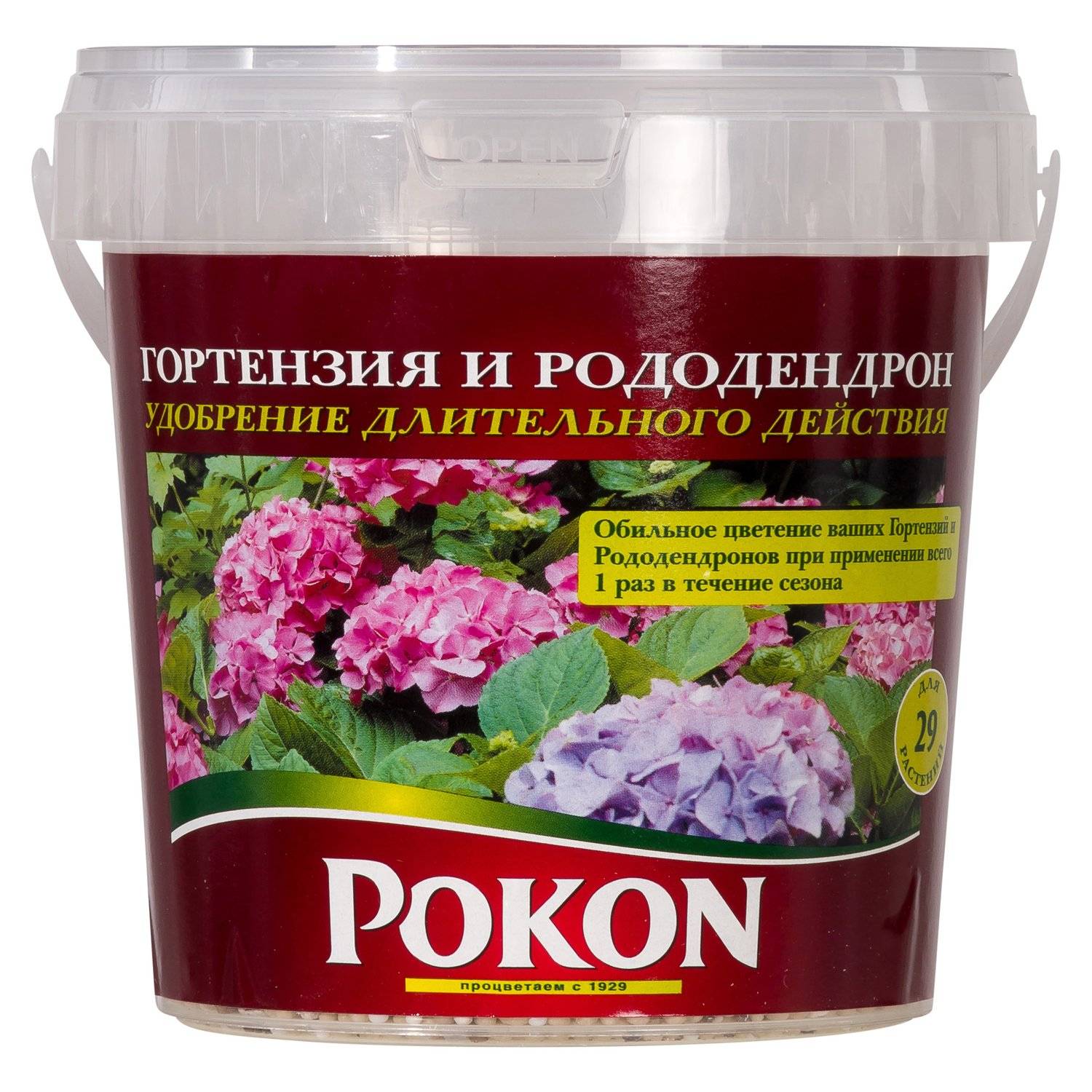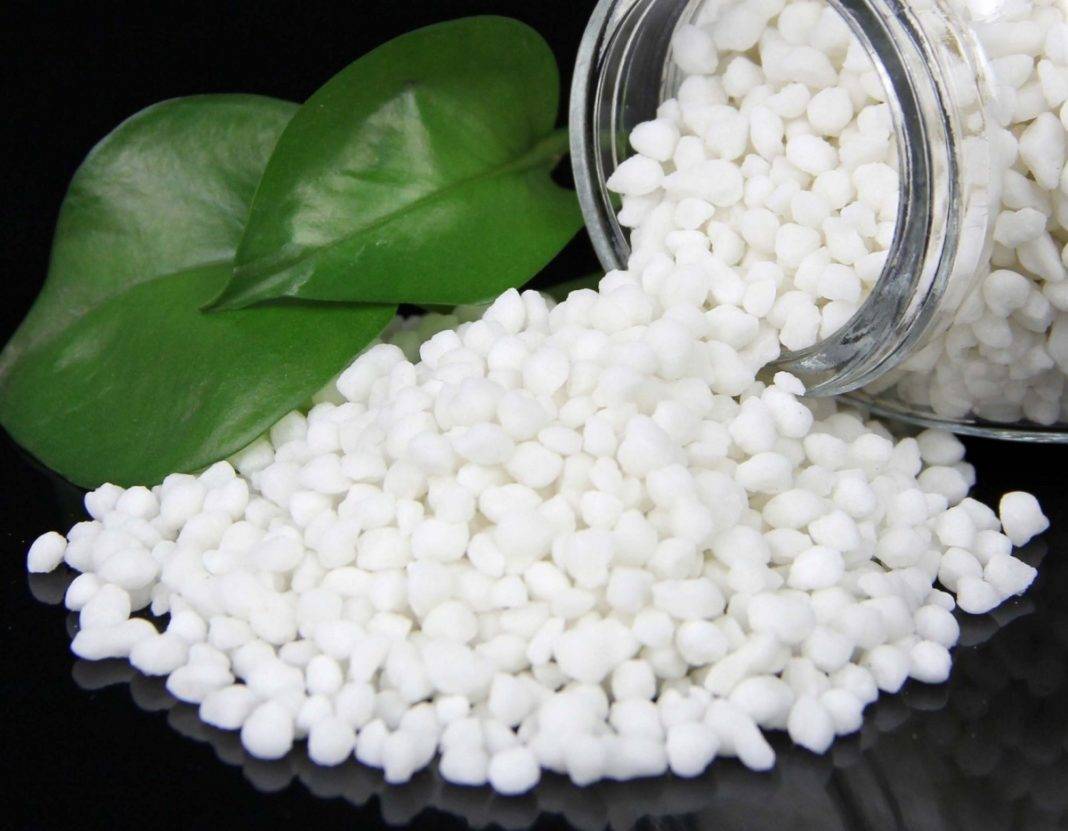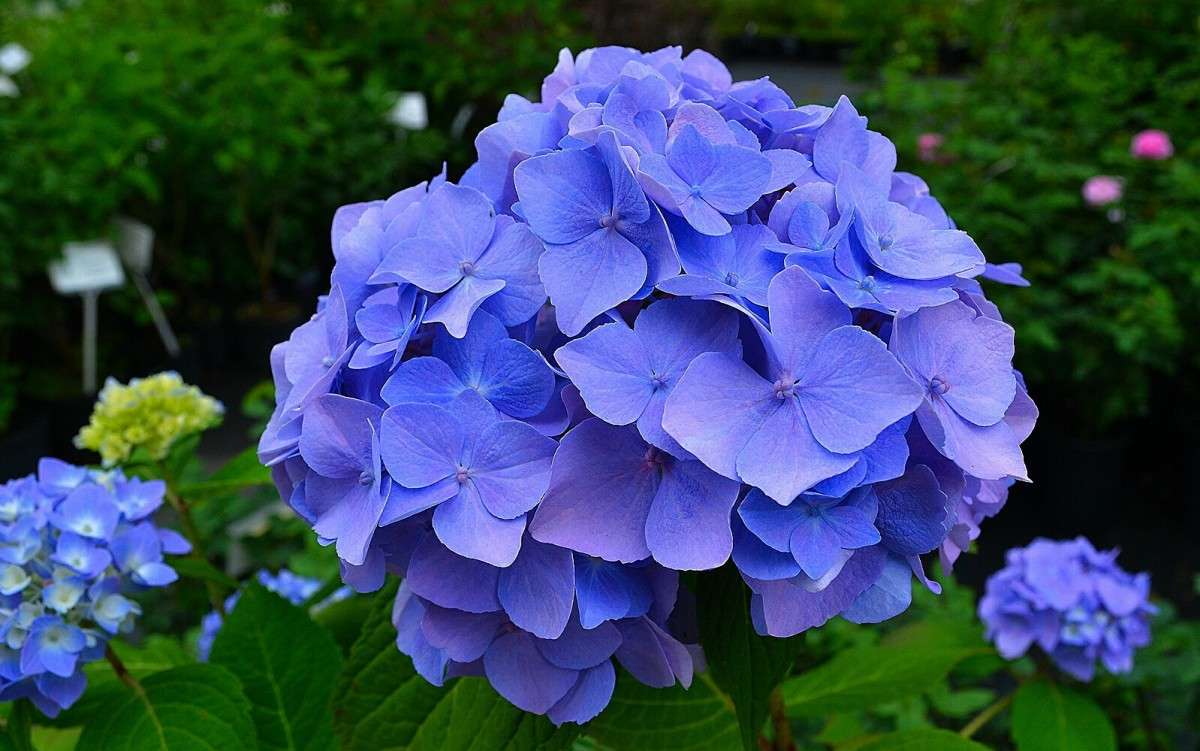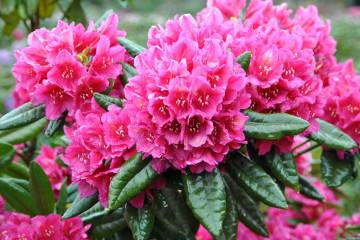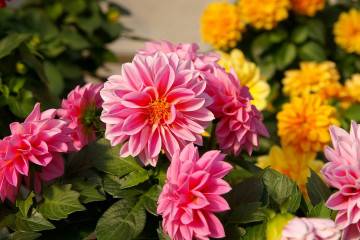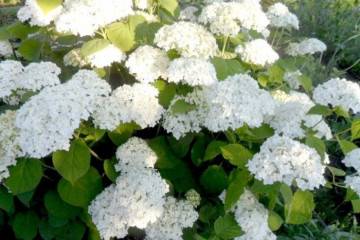How to feed hydrangea in spring for lush flowering in the garden
Content:
Hydrangea became popular in the last century. All its varieties and species are distinguished by lush flowering, but only with proper care. First of all, this is the introduction of the necessary trace elements. It is especially important to feed the plants in the spring.
How to feed hydrangea in spring
Spring feeding is needed to build up the green mass of plantings. Active growth and development of the crown is achieved by the introduction of nitrogen compounds. Potassium sulfate and urea are perfect. For better assimilation, they are diluted in water (15 g per bucket of water).
To feed hydrangeas in the spring, you can also use organic matter, for example, mullein or bird droppings diluted with water. To do this, the manure is diluted with a small amount of water and left to ferment for several days. After that, he is diluted with a large volume of water.
Do I need to feed hydrangea in spring
For an adult hydrangea, spring feeding is required. In order to grow new stems and foliage, it needs nutrition. This contributes to the development of green mass, the growth of good side branches. Further, inflorescences will form on them. The absence or lack of trace elements badly affects the appearance of the shrub. The stems become thin, the leaves are pale. Often, the crown loses young leaves.
If a young seedling was planted in compliance with the rules, then for 2-3 seasons it does not need additional feeding. Sufficient fertilizer is added when it is planted in the hole. The soil mixture contains:
- humus;
- superphosphate;
- urea;
- potassium sulphide.
But some gardeners believe that a young plant will not be able to fully assimilate trace elements and, when planting, do without enriching the soil. Then fertilization will depend on the appearance of the bush. A plant suffering from a lack of nutrients grows and develops poorly. His inflorescences will be rare and medium-sized. The flowering period will be shortened. The bush will become the object of an invasion of pests.
Infection with various rot is also not uncommon. Their appearance can be understood by mold (blooming) on the stems and leaves. Naturally, such a bush, regardless of age, needs fertilization.
Cheat Sheet for Beginners:
- Nitrogen is needed to build up green mass. In its absence or insufficient amount, the assimilation of other elements becomes more difficult.
- Phosphorus is responsible for the formation of paniculate inflorescences and the duration of flowering. Helps resist fungal infections.
- Potassium contributes to the maintenance of immunity.
- Magnesium provides health and flower buds.
- Iron also strengthens the immune system, saves foliage from chlorosis (especially important for large-leaved species).
Fertilizers for active growth and lush flowering in the garden
Feeding hydrangeas is possible with chemical compounds and improvised means.For example, you can use:
- manure;
- infusions of garden plants;
- compost.
At the same time, it is important to observe the required soil acidity. For hydrangea, this is a pH of 4.5-5. Low acidity leads to a deterioration in the decorative effect of the crown.
As soon as the time for budding comes, you should rush to fertilize the garden beauty. You can use ready-made preparations or prepare the desired mixture yourself. The main thing is that phosphorus and potassium are present there.
To prepare top dressing, you will need 15 g of potassium nitrate (potassium nitrate) and superphosphate per 10 liters of water. Half a bucket is enough for one bush. For the strength of the branches, it will not be superfluous to water the flower several times a season with a slightly pink solution of manganese.
Fertilization with folk remedies
First you need to understand that home remedies can only be a help, and not the main feeding. They should be combined with mineral supplements.
At the beginning of the growing season (April-May), any organic matter is useful for hydrangea, but it must first be fermented. To do this, the manure is diluted in a little water and then left to ferment for a week or two. All this time, the composition is regularly shaken. With the end of fermentation, it should be filtered. Further, it is used in a diluted form. The poultry composition is diluted in a ratio of 1:20, and the rest - 1:10.
To increase the acidity of the soil, gardeners often use fermented milk products. Top dressing with yogurt, kefir has a beneficial effect on the flowering of the plant.
To strengthen the root system and enrich the soil with beneficial microorganisms, an infusion based on stale rye roll is used. Baker's yeast is used for the same purpose. The composition is prepared from:
- dry yeast bag;
- 40-45 g (3 tablespoons) sugar;
- half a glass of warm water.
The foamed solution should be diluted in a bucket of water. It is applied along the root zone of the bush.
In favor of folk methods, one can notice their absolute harmlessness to plants, soil, and the environment.
Application of mineral fertilizers
Hydrangea or hydrangea (lat. Hydrangea) prefers somewhat acidic soil, so the frequent use of organic matter for feeding it is unacceptable. It is best to alternate feeding. Mineral fertilizers contain only the declared components, so you can properly meet the needs of the flower.
For these purposes, the familiar simple formulations are well suited:
- superphosphate;
- ammonium sulfate;
- potassium sulfate.
After winter, when it is already possible to open the bush, it is advisable to use a urea solution (15 g per bucket of water).
Long-lasting fertilizers
Hydrangea is convenient because it can be fertilized once a season. For this, a complex preparation with prolonged action is selected. The most popular ones:
- "Hydrangea and rhododendrons".
- ASB Greenworld.
- "Long lasting fertilizer for rhododendrons, azaleas and hydrangeas."
- Pokon.
- Target.
In accordance with the instructions, fertilizers are applied once in the spring.
Ready mixes for fertilizing hydrangeas
Hydrangea is grown all over the planet. It can be seen in parks, gardens and summer cottages. The plant is in great demand, therefore, breeders of all countries are engaged in breeding it.
How to fertilize hydrangea in our time is not a problem. To maintain decorativeness, a huge number of different dressings have been created. There are complex ones, and there are those aimed at eliminating individual shortcomings.
Agricola specialists have created fertilizers with the same name in three forms:
- concentrate;
- sticks;
- granules.
Before use, the concentrated solution is diluted with water in a proportion of 10 ml per liter of water, used for feeding the roots. For spraying, half the rate is enough.
Agricola sticks are simply stuck in the root zone. For prophylaxis, it is enough to change them once a month. If there is evidence - once a week.
The granular version is scattered around the trunk (at a distance of 25-30 cm) and watered abundantly with water.
The culture is often iron deficient. This can be understood by the appearance of chlorosis on the foliage. To eliminate it, Ferrovit is successfully used (1.5 g per 1 liter of water). It can be used prophylactically. Enough twice a season.
Mineral complex GreenWorld aims to improve the quality of flowering. It is brought in in late spring and mid-summer. Fertika also prepares fertilizers for hydrangeas. The funds are available in granular and liquid form. For a healthy bush, one top dressing in the spring is enough. If necessary (poor condition of the bush) feeding can be repeated in the middle of the growing season.
When to apply top dressing, at what temperature
Before feeding the hydrangea in the spring, you should make sure that the return frosts have receded. The temperature must be positive. This usually happens when the snow has completely melted. This first feeding will help the bush to completely recover from hibernation.
The first nitrogen fertilization of hydrangeas
The first feeding is nitrogen (urea, ammonium nitrate). It is needed to build up green mass. Moreover, it must be carried out until the middle of the growing season. Excessive nitrogen content in the soil is bad for the flowering of the bush. Nitrogen fertilizers should not be applied starting from the second half of June. They contribute to the formation of new shoots and leaves, but young stems that appeared at the end of summer will not have time to complete development before frost. This can lead to the death of the plant in the winter. Along with nitrogen, it will be useful to add a little potassium and phosphorus.
The second complex mineral dressing
There are many complex mineral fertilizers for flowering plants on sale. Some of them are used by hydrangea lovers.
When applying fertilizers, you should adhere to some conditions:
- in the spring, only root dressings are carried out;
- the composition is applied in a circle, at a distance of 25-30 cm from the trunk;
- top dressing is accompanied by abundant watering;
- the procedure is completed by mulching the root zone with humus, peat, compost.
The following fertilizers can be recommended as universal:
- Fertika Kristalon for hydrangeas and azaleas;
- Agricola for hydrangeas.
The third and fourth phosphorus-potassium supplements
The last two dressings are needed to maintain the quality of flowering and prepare for wintering. Therefore, from mid-summer to mid-autumn, the emphasis is on potassium and phosphorus. From granular you can use:
- nitroammofosk (20-30 g per bucket of water);
- diammofosku (20 g per bucket of water).
For the last (autumn) feeding, phosphorus is very important. It has a beneficial effect on strengthening the root system before the dormant period.
With the onset of warm days, the garden hydrangea is ready to start growing. To grow the crown, to lay a large number of inflorescences, it requires a lot of building elements. How to feed the hydrangea depends only on the preferences of the gardener. Fortunately, there are enough fertilizers on sale. Considering all the needs of the pet, abundant and lush bloom will be available every season.

